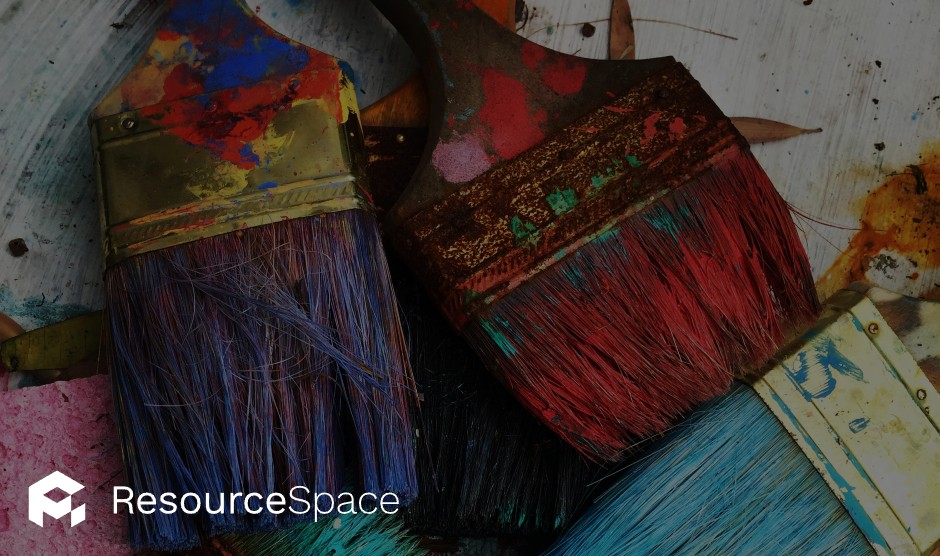
ResourceSpace has changed the way the DEC uses content, making it much easier for us to quickly make assets available both internally and externally during our emergency appeals.
Blog
10th June 2024

From stock images and custom graphics, through to your company’s logo and brand icons, marketing assets include a wide range of multimedia that can be used to promote your business and support the sales process.
However, as your organisation matures, the number of marketing assets you’ll have at your disposal will increase and some of them will become out of date.
This is where Marketing Asset Management comes in.
Marketing Asset Management (MAM) refers to the process of organising, storing and maintaining your marketing assets. This includes:
MAM can be used to refer to the process of managing marketing assets, but there is also dedicated MAM software designed to help organisations manage these assets.
If you’re thinking that MAM software sounds a lot like Digital Asset Management (DAM) software, you’d be correct. Both MAM and DAM work in very similar ways, and DAM systems can be used to manage all of an organisation’s marketing assets.
The key question is, do you need a MAM as well as a DAM?
Although Marketing Asset Management vendors might disagree, if you’ve got access to a comprehensive and well managed DAM platform you probably won’t need a separate MAM system. While some MAM platforms might offer certain niche functionality that your DAM system doesn’t, the chance that this would warrant investment in brand new software is low.
For the most part, a DAM will be able to do everything you need from a marketing asset management perspective, but the reverse won’t necessarily be true.
Marketing Asset Management shouldn’t be confused with another type of MAM: Media Asset Management.
Media Asset Management is very similar to Marketing and Digital Asset Management in that it is designed to organise, store, maintain and facilitate the sharing of media files. The difference is that Media Asset Management software is intended for very high quality audio and video files. For example, film and television production companies would use Media Asset Management because they need a system that doesn’t just offer huge amounts of file storage, but that can also rapidly process high quality video and audio content.
There are lots of benefits to implementing software and processes for facilitating Marketing Asset Management, whether that’s with a dedicated MAM system or a Digital Asset Management system.
Many organisations rely on file storage software like Microsoft SharePoint or Google Drive for asset management, but these platforms don’t make it easy to find things when you don’t know where they’re located.
READ MORE: Four implications of using Google Drive for storing digital assets
When files are organised in a DAM they’re not only stored in one place, but organised with metadata, allowing you to search for assets based on related keywords or any other salient information the file has been tagged with, rather than specific file names.
Marketing assets can be shared with team members, as well as trusted third parties, with just a few clicks. You can also set granular and time-limited permissions, and add password protection, for additional control over how those assets are used.
READ MORE: Problems ResourceSpace solves: Sharing resources
Protecting the integrity of your brand identity is essential, but not easy—particularly if you don’t have a dedicated marketing or Digital Asset Management platform for product marketing.
Both MAMs and DAMs make this easy thanks to comprehensive version control features that retain all file versions, track the history of changes and set expiry dates on certain assets so they can’t be used once out of date.
Most DAM systems (including ResourceSpace) will offer detailed asset usage analytics, allowing you to see which resources people are using most, and what searches aren’t currently being catered for.
This will help to identify when new images or graphics need to be commissioned or when assets should be tagged with new metadata.
By making all of your best marketing collateral easier to find you ensure the investment in those assets doesn’t go to waste.
Instead of a graphic being used for a single blog post, it can now be repurposed for social posts, sales collateral and more, while you also reduce the amount of money wasted creating new content that’s similar to what you’ve already got.
ResourceSpace is a leading provider of Digital Asset Management for product marketing, but the system also boasts a wide range of features that make managing marketing assets much easier.
“ResourceSpace helps to structure what we have, what we obtain, and how we control access - which mainly comes from metadata. It has allowed us to move to create a standardised catalogue of searchable and findable assets.”
- Elspeth Cowell, Head of Digital Media, Canadian Centre for Architecture
If you’d like to see for yourself exactly how ResourceSpace can help you manage marketing assets, why not book a free, no obligation demonstration of the software by clicking below? Alternatively, you can reach out to our team with a question here.
#BrandAssets
#UsageRights
#Consent
#BestPractice
#ResourceSpaceTips
#IndustryNews